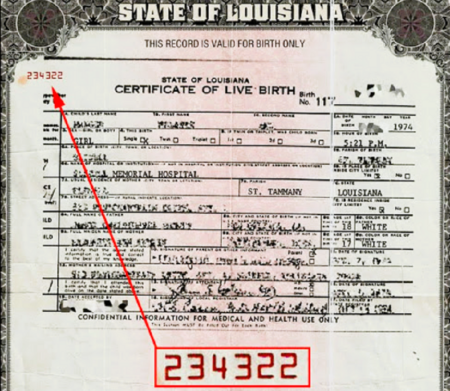ARCHIVES OF TREASON: TRAITORS TO THE PEOPLE! Obama, Bush, and Clinton Pushed a Biological Weapon — Over 40 Million Dead and Counting. They Called It Science. History Will Call It Genocide. [VIDEO]
Ready to uncover the truth? Sick of the lies? Join our Telegram Channel now. It’s time for the real story! Stay informed! My gratitude to all my readers!
ARCHIVES OF TREASON: Obama, Bush, and Clinton pushed a biological weapon disguised as a vaccine. Over 40 million dead. No remorse. No accountability. This wasn’t a health campaign — it was mass deception. And the people were the experiment.
THE SMILING EXECUTIONERS
They stood before cameras — polished, rehearsed, applauded. They assured the public that “the science is settled,” that “vaccination is safe and effective,” that obedience equals survival. With tailored suits and scripted sincerity, they sold the masses on a medical agenda forged not in truth, but in political collusion and pharmaceutical blood money.
Barack Obama. George W. Bush. Bill Clinton.
Three former Presidents. Three figures worshiped by media. Three agents in what is now undeniably the largest biopolitical cover-up in human history.
Over 40 million dead — and rising.And not a single word of remorse.
THE TRINITY OF DECEPTION
In late 2020 and early 2021, when fear was the world’s currency, and doubt was treated like treason, these three men emerged from the shadows of irrelevance to reassure a panicked population that salvation came in a syringe.
They stood shoulder to shoulder — not divided by party lines, but united in deception. They didn’t plead. They commanded. Their message was clear:
“Trust the science. Take the shot. Protect your neighbors. Save your country.”
But they weren’t saving lives. They were initiating mass compliance to a global pharmaceutical experiment, wrapped in patriotism, cloaked in science, and fueled by decades of behind-the-scenes deals with biotech conglomerates.
THE DEATH TOLL THEY NEVER MENTION
Today, the body count is no longer theoretical. The consequences of that forced medical intervention have surpassed every global conflict of the modern age, yet the media remains silent.
Over 40 million lives lost to vaccine-related complications, from cardiovascular collapse to neurological destruction.
Fertility devastated across nations.
Autoimmune disorders skyrocketing.
Millions of families left in the wake of sudden, unexplainable deaths — always dismissed as “coincidence.”
But this was not coincidental. It was calculated. It was biopolitical warfare waged with a smiling face and a presidential seal.
Don’t Miss This: Attention!!! What Happens When You Put The Most Powerful Energy Source In The World Near Your Beating Heart? You’re About To Find Out…
THE TRUE VIRUS WAS OBEDIENCE
While social media censored dissent, while doctors were stripped of licenses for raising questions, while families were divided over mandates and passports, these three former Presidents weaponized their legacy to push a lie deeper into the American psyche.
They told the public:
“We’re all in this together.”
But they were never part of the same game. They were the dealers, not the users. The messengers of mass submission, not the victims.
Their children were protected. Their donors were enriched. Their hands remained clean — while the blood ran silently in hospitals, homes, and morgues.
They stood as the political priesthood of Pharma’s religion, preaching blind trust and punishing apostasy. And the people — scared, confused, and isolated — followed them into the abyss.
NO INVESTIGATION. NO ACCOUNTABILITY. NO COINCIDENCE.
Where are the tribunals?
Where are the journalists?
Where is the justice?
The answer is painfully simple: the same forces that orchestrated this mass deception are still controlling the narrative, the data, and the silence.
No former President has been subpoenaed. No health official has stood trial. Not one public apology has been issued for the lives lost, the careers destroyed, or the freedoms sacrificed at the altar of false science.
Why? Because what happened wasn’t a policy failure — it was the success of a long-engineered plan.
A plan that demanded absolute compliance, and punished all resistance.
FROM LEADERS TO LIARS — THE JUDGMENT OF HISTORY
Obama. Bush. Clinton. They weren’t saviors. They weren’t advisors. They were instruments in a campaign of organized global control, camouflaged as public health.
They didn’t warn the public.
They weaponized fear.
They didn’t defend the Constitution.
They bulldozed rights under the weight of “science.”
They didn’t protect the people.
They endorsed a biological agent that has killed more than any declared war.
And now, as the graves multiply, as families bury loved ones without answers, they hide — behind foundations, Netflix deals, book tours, and award ceremonies. But no matter how thick the PR fog, the truth is rising.
This wasn’t guidance.
This wasn’t science.
This was war.
And they were the generals of that war — smiling, shaking hands, and leaving devastation in their wake.
Traitors to the people.
Obama, Bush, and Clinton urged the public to take a biological agent—now, over 40 million lives have been lost.
They told us, “The science is settled. Get vaccinated.”
Now the consequences speak louder than their words. pic.twitter.com/lDREOH70vd— Jack Straw (@JackStr42679640) May 30, 2025
CODE BLACK – FROM THE WAR ROOM: DEEP STATE LEAK EXPOSES WHY THEY HAD TO ELIMINATE GENERAL FLYNN – “We Have It All” Wasn’t a Threat. It Was a Death Sentence — for Their Secrets. [VIDEO]
General Michael Flynn finally exposes why the Deep State had to eliminate him: “I had access to everything.” From intelligence secrets to covert corruption, Flynn’s takedown was never justice — it was sabotage. Now, military tribunals may be the only way to restore the Republic.
WHY THEY HAD TO REMOVE FLYNN: ACCESS, POWER, AND UNDENIABLE TRUTH – VIDEO
ALSO: ALERT! GENERAL MIKE FLYNN SIGNALS COMEBACK – “I’M READY TO SERVE TRUMP AGAIN. THE DEEP STATE FEARS ME” – SET TO RETURN AS NATIONAL SECURITY ADVISOR [VIDEO] – https://amg-news.com/alert-general-mike-flynn-signals-comeback-im-ready-to-serve-trump-again-the-deep-state-fears-me-set-to-return-as-national-security-advisor-video/
RELATED: BREAKING: General Flynn Demands Arrest of Obama, Brennan, Comey and Deep State Cabal Over Coup Against Trump [VIDEO] – https://amg-news.com/breaking-general-flynn-demands-arrest-of-obama-brennan-comey-and-deep-state-cabal-over-coup-against-trump-video/

![ARCHIVES OF TREASON: TRAITORS TO THE PEOPLE! Obama, Bush, and Clinton Pushed a Biological Weapon — Over 40 Million Dead and Counting. They Called It Science. History Will Call It Genocide. [VIDEO]](https://amg-news.com/wp-content/uploads/2025/05/Obama-Bush-and-Clinton-Pushed-a-Biological-Weapon-1024x576.jpg)










![FAUCI RAIDED: KASH PATEL TO ROGAN: WE RAIDED FAUCI — PHONES & HARD DRIVES SEIZED, COVID LIES EXPOSED! [VIDEO]](https://amg-news.com/wp-content/uploads/2025/06/FBI-Kash-Patel-Fauci-raid-450x263.jpg)
